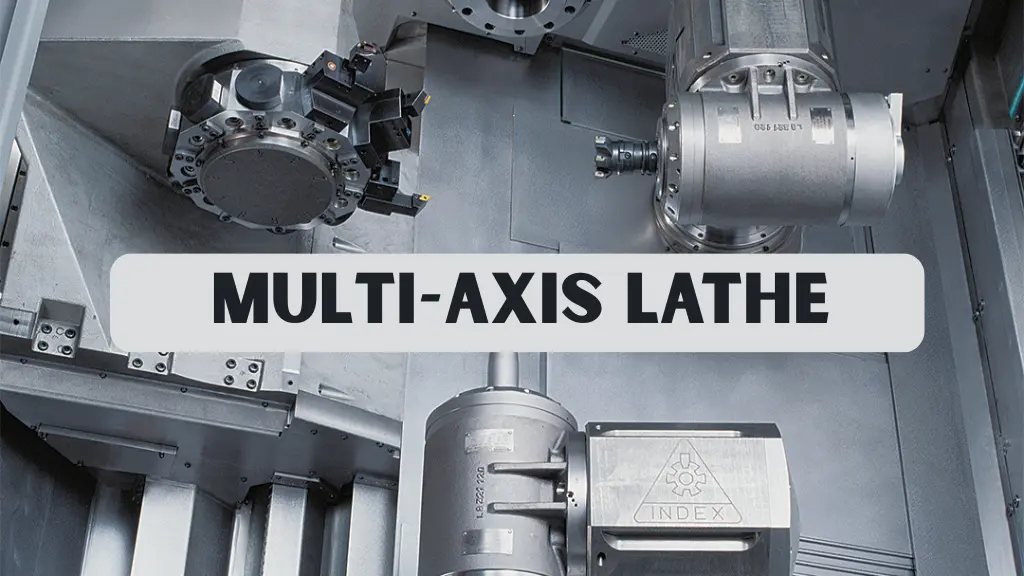In today’s manufacturing industry, a multi axis lathe plays a crucial role in producing highly precise components for aerospace, automotive, electronics, and medical sectors. These machines can perform complex operations across multiple axes, which reduces errors, saves time, and allows manufacturers to achieve intricate designs efficiently. Operators gain practical experience programming, troubleshooting, and maintaining these systems, improving workflow and ensuring consistent, high-quality output. Combining automation with skilled human oversight makes these machines indispensable in modern production environments.
Technicians and engineers apply their expertise in CNC machining, tooling, and CAM software to create complex parts accurately. Leading manufacturers, such as Siemens, bring decades of experience designing reliable multi-axis machines, and their certifications, customer reviews, and industry recognition reflect authority and trustworthiness. Verified information on specifications, maintenance practices, and real-world applications enables decision-makers to understand the machines’ value and optimize production processes with confidence.
What is a Multi Axis Lathe?
A multi axis lathe is a computer-controlled machine tool designed to perform turning and other machining operations across multiple axes. While conventional lathes typically operate along two axes, X and Z, advanced machines include additional axes such as Y, C, and B. This capability allows the equipment to execute multiple operations in a single setup, eliminating the need to reposition parts and reducing the risk of errors.
These machines offer precise and flexible machining through multiple axes, CNC control for automated, repeatable operations, and tool turrets or live tooling that enable milling, drilling, and tapping. High-speed spindles help reduce production time, and the system can handle complex part geometries efficiently. By integrating several operations into one setup, these lathes significantly lower labor costs while improving overall efficiency and maintaining consistent, high-quality output.
How These Machines Work
Multi-axis machines operate by coordinating the movements of cutting tools and the workpiece across several axes using computer numerical control (CNC). This system interprets programmed commands, allowing the machine to perform intricate operations that would normally require multiple setups or separate machines.
At the heart of every multi-axis machine is the spindle, which rotates the workpiece precisely for turning operations. The tool turret holds multiple cutting tools and enables automatic tool changes, while the CNC controller translates design plans into machine movements using G-code. The additional axes provide linear movements along X, Y, and Z directions, as well as rotational adjustments through C or B axes. Live tooling allows drilling, milling, and tapping without moving the part to another machine. The synchronization of these components ensures high accuracy, repeatability, and efficiency when producing complex parts.
Different Types of These Lathes
Multi axis lathes vary depending on the number of axes and their specific design. Each type offers unique advantages for different manufacturing requirements.
Three-axis machines operate along X, Z, and rotational C axes, making them suitable for simple turning and facing operations and typically used for small to medium-sized parts. Four-axis machines include an additional Y-axis for off-center drilling, milling, or threading, which is particularly useful for parts with cross-hole patterns or moderate design complexity. Five-axis machines allow full spatial movement with two additional rotational axes, making them ideal for aerospace, automotive, and medical components requiring precise and intricate machining.
Swiss-type machines are designed for producing small, precise components. They feature sliding headstocks and bar feeders that enable continuous production with minimal manual intervention. These machines are particularly effective for high-volume production of small parts that require extreme precision.
Advantages
Investing in a CNC multi-axis machine provides significant benefits for manufacturers. These systems achieve high precision by performing multiple operations in a single setup, greatly reducing errors that could occur when parts are repositioned across different machines. They also improve production efficiency by streamlining processes and eliminating time-consuming setups, which shortens cycle times and accelerates delivery schedules.
Versatility is another key advantage. CNC multi-axis machines can perform turning, milling, drilling, and threading operations on a single platform, allowing manufacturers to handle a wide variety of components without additional equipment. Over time, this capability reduces labor costs and minimizes secondary machining expenses. The ability to produce highly complex geometries with consistent accuracy makes these systems indispensable in industries where precision is critical.
For instance, a manufacturer in the aerospace sector implemented a five-axis CNC multi-axis machine to produce turbine components. This change resulted in a 35 percent reduction in production time and a significant decrease in part errors, ultimately enhancing customer satisfaction and profitability. Such examples demonstrate how these advanced machines can transform production workflows in precision-focused industries.
Applications
Multi-axis machines are widely utilized across various industries because of their versatility and precision. In the automotive sector, these systems are employed to manufacture engine components, drive shafts, gear hubs, and suspension parts. In aerospace, they play a crucial role in producing turbine blades, landing gear components, and structural elements. The medical device industry depends on these machines for creating surgical instruments, implants, and orthopedic devices.
The electronics industry also benefits from CNC multi-axis machines, which are used to produce connectors, housings, and small precision components. In general manufacturing, these systems are often applied to custom parts, prototypes, and small-batch production. By streamlining operations, CNC multi-axis machines enable manufacturers to maintain tight tolerances, reduce production costs, and improve overall efficiency.
Considerations Before Investing
Before purchasing a multi axis machine , manufacturers should carefully evaluate several factors. The number of axes is critical; five-axis machines are capable of producing highly complex parts, while three or four-axis machines may suffice for simpler components. Material compatibility must also be considered, as the machine should handle commonly used materials such as steel, aluminum, titanium, and plastics. Spindle power and tooling need to match the hardness and type of materials being machined.
Spindle speed and power are essential for achieving smooth finishes and efficient cutting. High-speed spindles reduce cycle times, while high-power spindles handle tougher materials. The CNC control system should be user-friendly and reliable, with advanced controls like Siemens or Fanuc offering programming flexibility, monitoring, and automation features. Tooling options, such as live tooling and automatic tool changers, enhance the machine’s versatility and allow multiple operations to be performed without repositioning parts.
Finally, maintenance and support are crucial. Access to technical support, replacement parts, and service minimizes downtime and ensures the machine operates reliably over its lifespan. Careful consideration of these factors helps manufacturers select a machine that aligns with production needs and long-term operational goals.
Programming Process
Programming a multi axis lathe requires technical expertise and experience with CNC systems. The process begins with creating a detailed CAD design of the part, which serves as the blueprint for all subsequent operations. Once the design is finalized, CAM programming is used to generate precise toolpaths and simulate machining operations, ensuring that every cut is accurately planned before production begins. Post-processing then converts these toolpaths into machine-specific G-code, which the equipment interprets during actual production.
Setting up the machine involves carefully installing the workpiece, preparing the necessary tools, and calibrating all axes to ensure alignment and precision. Operators must verify that all components are correctly positioned and that the machine is ready to execute the programmed operations. This preparation is critical to prevent errors and to maintain the integrity of complex parts, especially when working with intricate geometries.
Once the program is executed, quality control checks are performed to confirm that the finished part meets required tolerances. Advanced simulation software allows operators to optimize toolpaths and machining sequences before production, reducing the likelihood of errors and improving overall efficiency. This structured programming and setup process is essential for achieving consistent precision in high-demand manufacturing environments.
Maintenance Tips
Regular maintenance is critical for ensuring the longevity and consistent performance of a lathe multi axis machine. Daily tasks include cleaning chips from the machine, lubricating guideways, and inspecting tool holders. Weekly maintenance involves checking spindle and turret alignment and verifying coolant flow. Monthly inspections should examine the control system and electrical components, while annual maintenance may include replacing worn parts, recalibrating axes, and performing thorough inspections.
Implementing a preventive maintenance schedule minimizes downtime, increases operator safety, and ensures consistent high-quality output. Manufacturers who prioritize maintenance often experience longer machine lifespans and better return on investment.
Conclusion
A multi axis lathe is a vital investment for manufacturers aiming to improve precision, efficiency, and versatility in their production processes. By performing multiple complex operations in a single setup, these machines reduce production time, minimize errors, and deliver high-quality components across industries.
When choosing a machine, it is important to consider the number of axes, material compatibility, spindle power, CNC control system, tooling options, and maintenance support. Proper operation and regular maintenance ensure long-term reliability and performance. For additional information on advanced machining technologies and industry standards, visit Siemens Manufacturing Technology.
Frequently Asked Questions
What is the difference between three-axis and five-axis machines?
Three-axis machines operate along X, Z, and C axes, while five-axis machines include additional rotational axes. This allows five-axis machines to create highly complex geometries with fewer setups.
Can these machines perform milling operations?
Yes. Multi-axis machines with live tooling can mill, drill, and tap in one setup. They eliminate the need to move the part to another machine. This improves both efficiency and accuracy.
Are they cost-effective for small shops?
Multi-axis advanced turning centers require a higher initial investment. They reduce labor and eliminate secondary setups. They also improve production efficiency, making them cost-effective for high-precision parts.
How precise are these machines?
Modern CNC multi-axis machines can achieve tolerances within microns, depending on calibration, tooling, and overall machine quality.
What materials can be machined?
These machines can work with metals like steel, aluminum, and titanium, as well as plastics and various alloys. Their capabilities depend on spindle power and the available tooling options.




